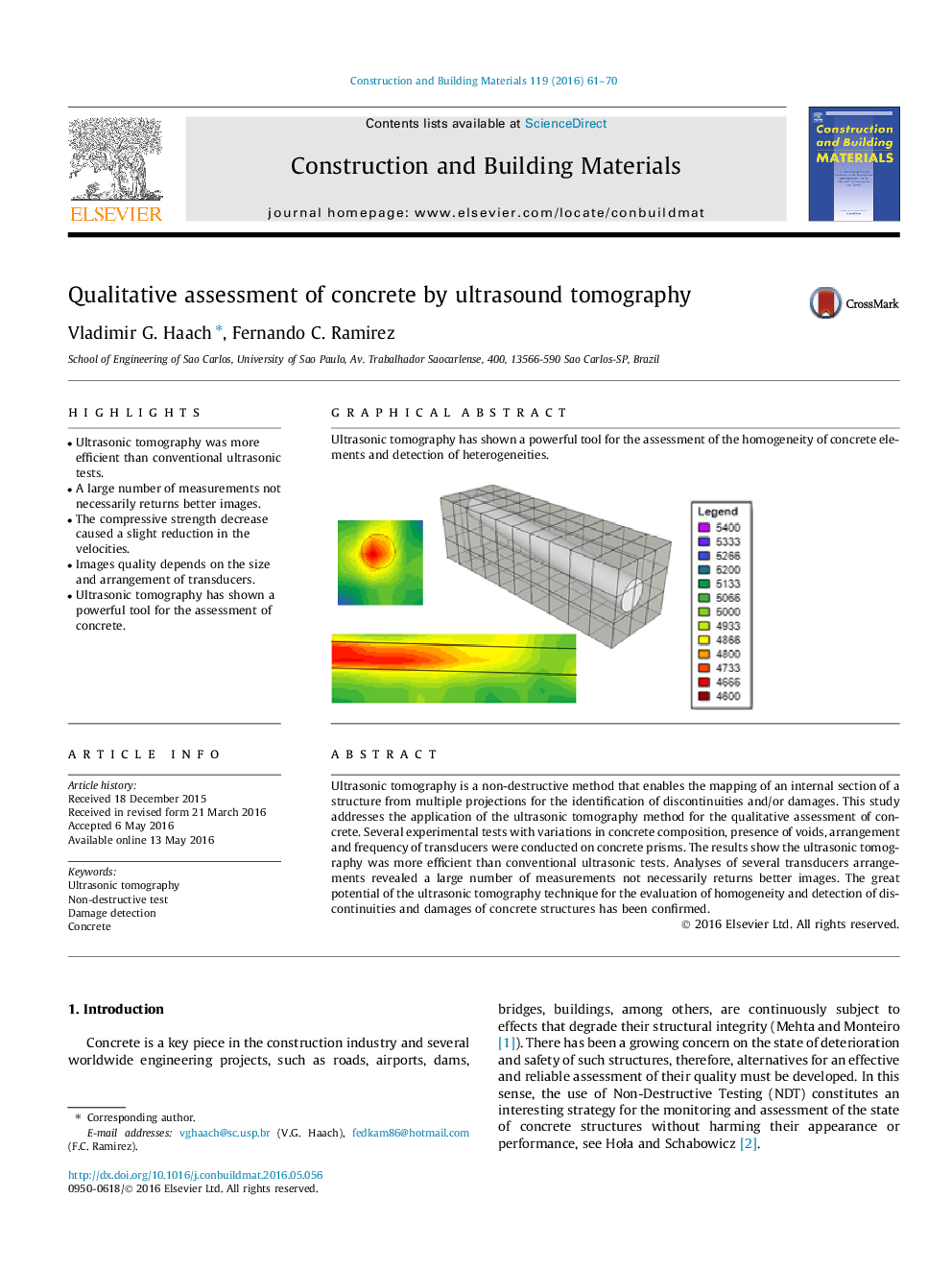| Article ID | Journal | Published Year | Pages | File Type |
|---|---|---|---|---|
| 255920 | Construction and Building Materials | 2016 | 10 Pages |
•Ultrasonic tomography was more efficient than conventional ultrasonic tests.•A large number of measurements not necessarily returns better images.•The compressive strength decrease caused a slight reduction in the velocities.•Images quality depends on the size and arrangement of transducers.•Ultrasonic tomography has shown a powerful tool for the assessment of concrete.
Ultrasonic tomography is a non-destructive method that enables the mapping of an internal section of a structure from multiple projections for the identification of discontinuities and/or damages. This study addresses the application of the ultrasonic tomography method for the qualitative assessment of concrete. Several experimental tests with variations in concrete composition, presence of voids, arrangement and frequency of transducers were conducted on concrete prisms. The results show the ultrasonic tomography was more efficient than conventional ultrasonic tests. Analyses of several transducers arrangements revealed a large number of measurements not necessarily returns better images. The great potential of the ultrasonic tomography technique for the evaluation of homogeneity and detection of discontinuities and damages of concrete structures has been confirmed.
Graphical abstractUltrasonic tomography has shown a powerful tool for the assessment of the homogeneity of concrete elements and detection of heterogeneities.Figure optionsDownload full-size imageDownload as PowerPoint slide
